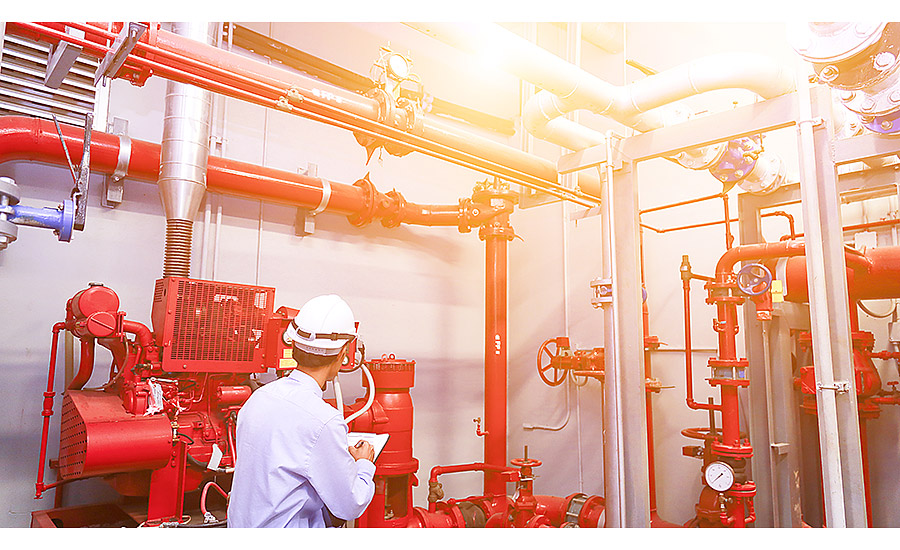In a environment where disasters can strike at any moment, fire protection services stand as a beacon of hope, providing essential support and assistance to protect lives and property. Whether in residences, organizations, or public spaces, understanding fire safety is crucial to effectively manage and mitigate risks associated with fires. From helpful tips on avoiding frequent hazards to developing detailed fire escape plans, being well-prepared can make all the difference when time count.
Every year, countless lives are saved due to the advancements in fire safety protocols, regulations, and technologies. It is not just the responsibility of fire safety professionals; individuals and organizations must take proactive measures to ensure safety. This article explores various aspects of fire safety, exploring essential knowledge that all individuals should possess. By empowering ourselves with the accurate information, we can create more protected environments for our families, colleagues, and communities.
Vital Flame Security Tips
Fire security starts at the household and in the office with a strong understanding of frequent flame hazards. One of the most essential actions is to identify likely fire risks, such as overloaded electrical outlets, unattended candles, and flammable materials stored close to fire sources. Consistently checking for these hazards and tackling them can considerably reduce the chances of a flame occurring. Regularly ensure that evacuation routes are clear and that you have a way for quickly shutting off any flammable sources, like fuel lines.
Another vital aspect of flame safety is the setup and maintenance of fire alarms. These units are your first line of protection in the event of a flame. https://lauesen-siegel.federatedjournals.com/the-unsung-firefighters-you-dont-observe-a-role-of-flame-prevention-services 's vitally important to check your fire alarms monthly and replace the batteries at least once a year. Additionally, changing Fire Engineering Consultancy is advised to ensure reliability. A properly cared for smoke alarm can provide critical time to get away from a fire, making regular checks a mandatory part of fire security at the household and in the office.

Creating a flame escape plan is essential for both families and companies. This plan should include clearly labeled escape routes and designated meeting points outside the building. Perform fire drills often to ensure all individuals knows what to do in case of an incident. In educational institutions, offices, and community venues, it is critical that everyone is acquainted with the plan and can implement it efficiently. Readiness can mean the difference between safety and catastrophe in a flame emergency.
Establishing an Effective Fire Escape Plan
Establishing an comprehensive fire escape plan is crucial for guaranteeing the protection of your family or employees in case of a fire. Start by identifying all exits in your home or workplace. Ensure that everyone is informed about these exits and that they are easily reachable. Think about designating a primary exit for each room and an alternative exit in case the primary one is obstructed. Escape routes should be clear, without visible obstructions, and all family members or employees must know how to access them quickly.
Next, it is important to establish a meeting place outside the building where all individuals can gather after evacuating. This location should be a safe distance from the property and easily identifiable, like a notable tree or a neighbor's yard. Make sure that all individuals understands the need of heading directly to this meeting spot instead of going back to the building to seek out others. Regularly review and practice this escape plan to ensure everyone remains acquainted with it.
In conclusion, carry out practice drills at least twice a year to help strengthen the escape plan. During these drills, practice different scenarios, such as having the exits blocked, to test how effectively everyone can respond. Use these moments to address any questions or uncertainties about the escape routes and meeting point. Consistent practice not only improves confidence but also heightens the chances of a safe escape during a real emergency.
Comprehending Fire Safety Regulations
Flame protection standards are critical parameters that provide the protection of lives and property from the dangers of fire. Such regulations are established by national organizations, including the National Fire Protection Association (NFPA), and municipal authorities, who aim to minimize flame risks through strict compliance measures. Companies and homeowners must be familiar with these standards to guarantee they meet protection requirements while functioning effectively.
Adhering to flame safety regulations involves putting into place multiple measures, including having the necessary fire prevention equipment, conducting routine inspections, and ensuring proper training for employees. Noncompliance to adhere with these regulations can lead to severe consequences, such as monetary penalties, legal responsibilities, and increased premiums for fire protection insurance. Therefore, staying informed about the latest regulations is vital for any establishment.
In addition, understanding flame protection regulations is crucial for establishing a culture of safety in any environment. Frequent updates and training programs can help employees identify potential hazards and the appropriate steps to reduce risks. By promoting a preventative approach to fire safety, businesses and people can not only comply with regulatory requirements but also develop a more secure community for all.
